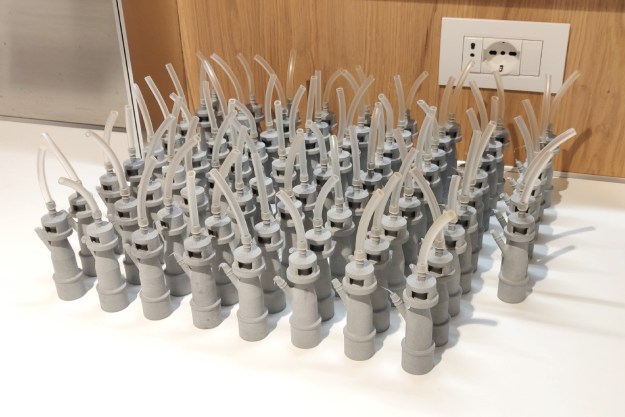
Depending on who you are, where you hail from, and where you stand on guns, 3D printing and related issues, this bit of news will either thrill/astound you, terrify you, or compel you to emit the all-too-familiar phrase “meh.” But here goes: A company by the name of Solid Concepts has made the world’s first metal gun using a 3D printer.
Based out of Austin, Texas, the 3D-printed metal pistol made by Solid Concepts is based on the Browning 1911 firearm. Solid Concepts set out to make this gun in an effort to prove that they can make weapons that are fit for “real world applications.” To make the gun, Solid Concepts utilized a manufacturing process known as direct metal laser sintering, or DMLS. DMLS is a 3D manufacturing process used to make metal parts for the aerospace and medical industries. The application for DMLS in the latter example is specific to surgical tools, meaning it’s perfectly suited for the creation of precision firearms.
“The whole concept of using a laser sintering process to 3D Print a metal gun revolves around proving the reliability, accuracy, and usability of 3D Metal Printing as functional prototypes and end use products,” says Solid Concepts’ Vice President of Additive Manufacturing Kent Firestone. “It’s a common misconception that laser sintering isn’t accurate or strong enough, and we’re working to change people’s perspective.”
While 3D printers are becoming more and more affordable all the time, don’t get the wrong idea: you can’t just slap down a couple thousand bucks for a MakerBot 3D printer and hope to make your own firearm from the comfort of your own garage.
“The industrial printer we used costs more than my college tuition (and I went to a private university),” said Alyssa Parkinson, a Solid Concepts rep. “And the engineers who run our machines are top of the line; they are experts who know what they’re doing and understand 3D Printing better than anyone in this business.”
In other words, there’s a big difference between the gun made by Solid Concepts and the weapons made by Defense Distributed, a Texas-based firm that designed guns intended to be built using 3D printers in your home.
Check out this demo of Solid Concepts Browning 1911 pistol below:
Editors' Recommendations
- 3DMakerpro’s Seal is a pocket-sized scanner to make next-gen precision 3D prints
- Need a last-minute Halloween costume? Check out these 3D-printable getups
- The future of making stuff: Inside the evolution of 3D printing with Formlabs
- Father’s Day Gift Idea: These cheap 3D printers are on sale for less than $300
- 3D printing lets hospitals make ventilator substitutes with common equipment


